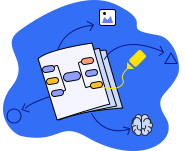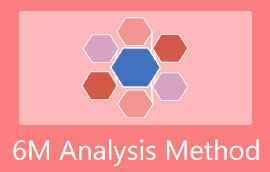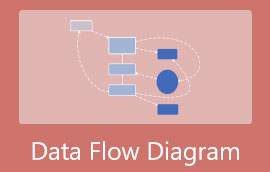Improve Your Thinking Approaches By Using Thinking Maps: What and How to Make Them
As everything evolves, so must the thinking process. Thinking maps brought so much improvement in the learning and working process of students, teachers, and even other professionals who are trying to develop a higher level of critical thinking. Therefore, if you are one of those who want to develop their analytical skill, switch to making maps for thinking.
Suppose you are in a situation where you want to learn a specific topic. Aren’t you going to dissect every aspect of it just to get it? In these times, scrutinizing an issue has been more accessible by using a map that visually depicts the problem's broad and deep. Thus, you will know the eight thinking maps you can use while studying by going through this article. And so, sit back, relax and continue reading below.

- Part 1. The Precise Meaning of Thinking Map
- Part 2. Different Types of Thinking Maps
- Part 3. The Easiest and Creative Way of Creating Thinking Maps
- Part 4. FAQs About the Thinking Maps
Part 1. The Precise Meaning of Thinking Map
A Thinking Map is a tool for learning that visually depicts the learners' abstract thoughts and thinking. Furthermore, this kind of map will help the learners effectively organize the information and ideas formed during the learning process. For this reason, the learners easily grasp the new concepts developed and be added to their new learnings.
Part 2. Different Types of Thinking Maps
There are eight different types of thinking maps: bubble, double bubble, tree, bridge, flow, multi-flow, brace, and circle maps (in no particular order). Furthermore, let us tackle each with its corresponding definition, purpose, and example. Each of them has its purpose and requires the users' solid abstract thought and analytical skills.
1. Bubble Map
The bubble map is known to be the map that describes the subject matter using adjectives. Furthermore, bubble maps are purposely helping the learners to express their subject or the main topic profoundly by scrutinizing the adjectives used in identifying and summarizing it. For this reason, this could probably be the best thinking map for students, especially in writing an essay.
Another good thing or reason to use a bubble map is when a learner is setting a goal. The bubble map is one of the most effective ways of achieving the final goal on the target date. The learners can break down their massive target into smaller pieces for concise and proper development handling. To help you visualize it, see the sample given below.
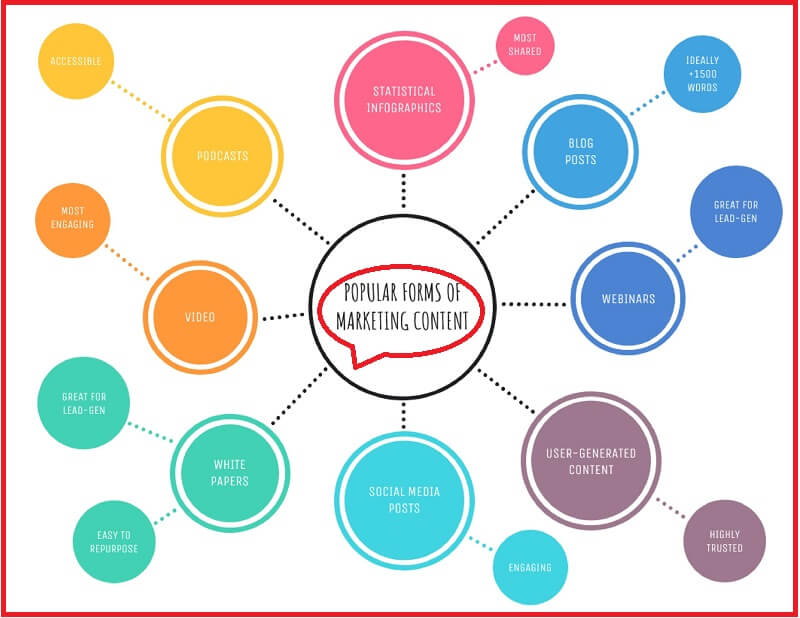
2. Double Bubble Map
Double bubble map is mainly the two identical bubble maps in one. Furthermore, the double bubble map is among the 8 thinking maps showing similarities and contrasts between the two main subjects. This is beneficial for the learners to have in-depth learning of the two individuals, ideas, events, or artifacts and see how they can correlate and differ from each other.
Another good thing or reason to use a bubble map is when a learner is setting a goal. The bubble map is one of the most effective ways of achieving the final goal on the target date. The learners can break down their massive target into smaller pieces for concise and proper development handling. To help you visualize it, see the sample given below.
As seen in the sample below, the resemblance of the two main topics is written in the bubbles that interplay with each other, while the contrast or their differences are the other way.
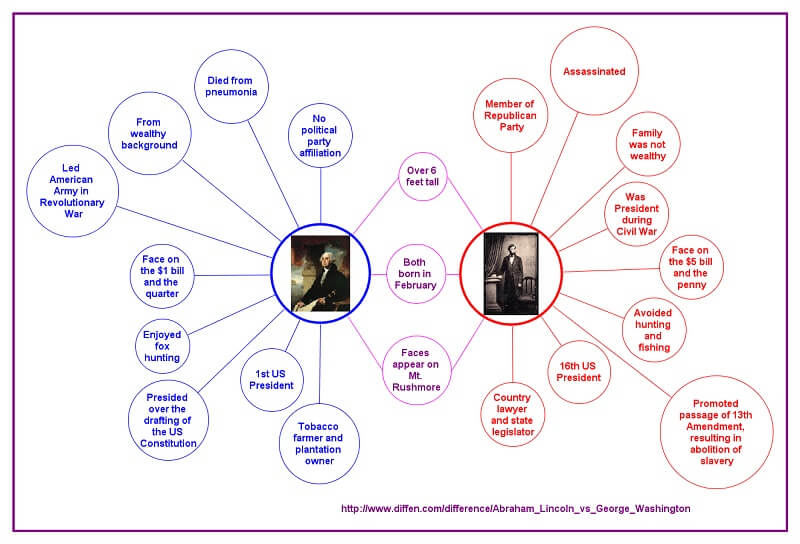
3. Tree Map
If you want to classify and organize your thoughts or the details from your primary idea, the treemap of the thinking maps is what you need to use. This treemap, just like the organizational chart, shows the hierarchical display of the data. Furthermore, a treemap classifies the data according to its primary categories. The main subject is placed on the top of the sub-topics, or the relevant information is placed under them. Through this structure, learners will expand their knowledge on the specific matter.
Primary students are also the ones who benefit from the treemap, but by the use of images to define the data. An excellent example of this is learning the food groups. By using this type of thinking map, students will be able to remember easily and quickly the 3 G's of food.
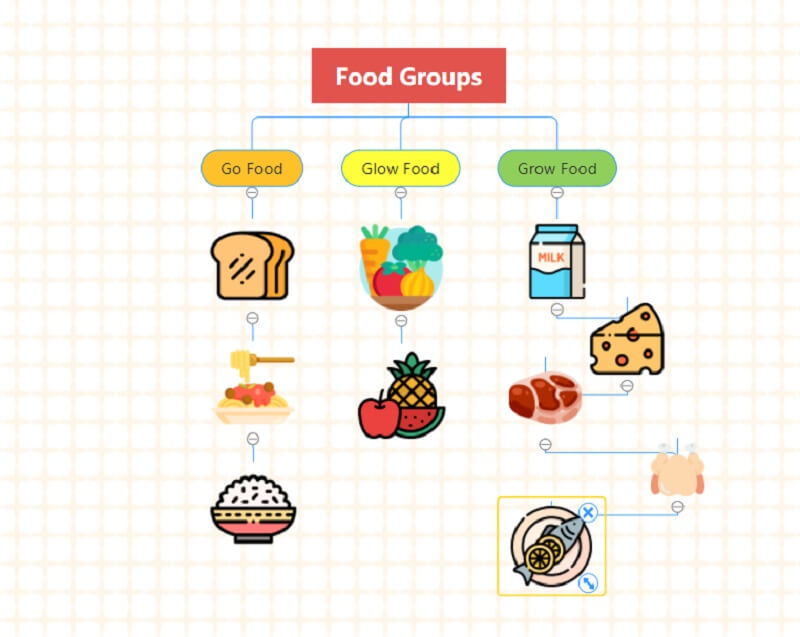
4. Bridge Map
Similar to the double bubble map, this bridge map is a tool that shows analogies and metaphors of ideas. Furthermore, it is a graphical tool that offers the connection between two or more topics. Hence, unlike the others, this kind of thinking map is not that easy to understand because of the correlating factors trying to be connected. On the other hand, as soon as you get the geez of it, you will see that just like the others, the bridge map of thinking maps is one of a kind.
In making a bridge map, the learner must recognize the relating factors between the ideas moving forward. Then, create the map and place the elements on the slide of the topics where it is placed.
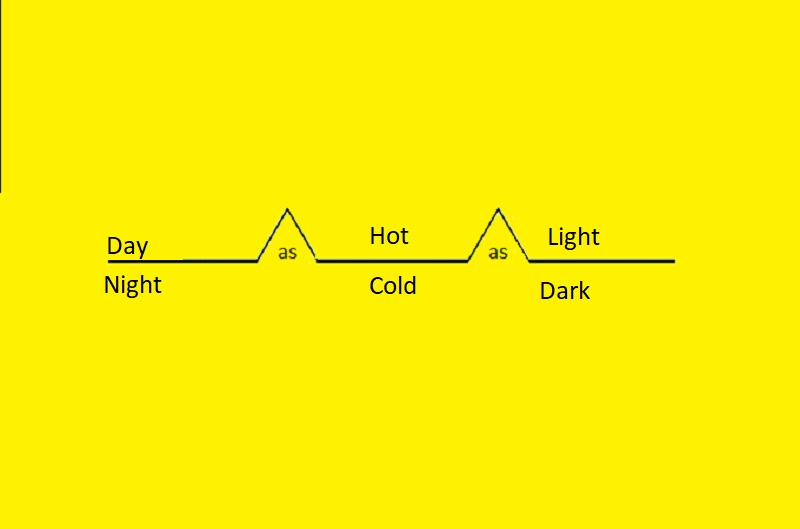
5. Flow Map
The flow map is one of the most recognized among the thinking maps. The flow map is widely used when making a step-by-step visual graphical procedure because this is its primary purpose. In addition, many people serve it by showing the sequence of the idea or the topic orderly. In fact, you can make your flow map a thinking map with clear arguments, for you can add some photos and other various things.
On the other hand, you may create a flow map by giving the main topic. Then, gradually create branches by linking them with an arrow and filling them with the information in sequence.
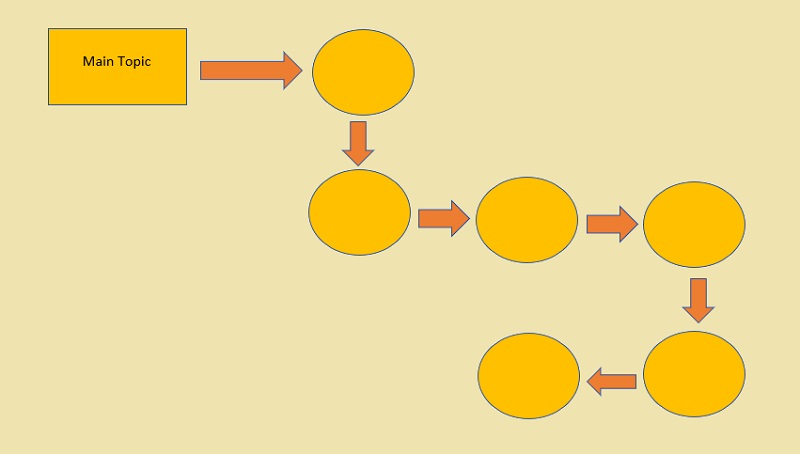
6. Multi-Flow Map
The multi-flow map is often used in showing the cause and effect of the situation or an event. Furthermore, this kind of map represents the results after contemplating the analysis given within the map. This is why the multi-flow map is the perfect map example to process thoughts analytically and present them to public meetings. For instance, you need to raise the global crisis we are encountering now—Covid 19, for example. Using the multi-flow map will show people the factors that cause the virus with the corresponding results and figure out solutions out of it.
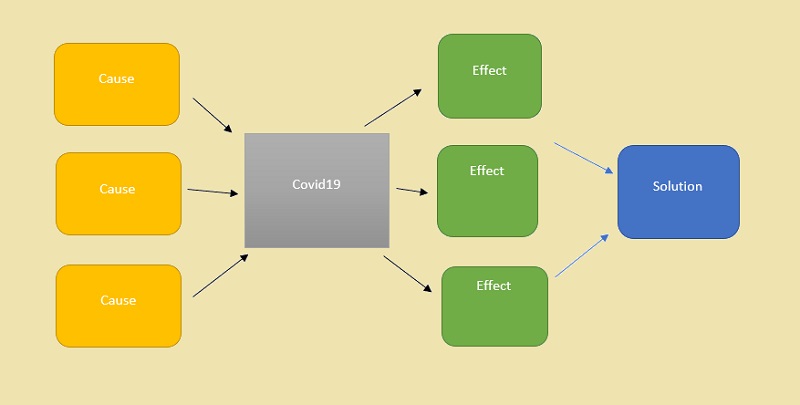
7. Brace Map
A brace map is a thinking map that shows parts of the whole topic. Furthermore, it is a kind of thinking map that doesn't present the abstract thoughts and ideas of the subject. Instead, it tends to conceptualize only the components of the issue. One of the brace map examples could also be your favorite dish recipe.
Hence, the most commonly used sample is identifying the body parts. For instance, your main topic is a kind of animal. Through the brace map, you can describe the parts by bracing them into a group, a group for the head part, the body part, and the lower part.
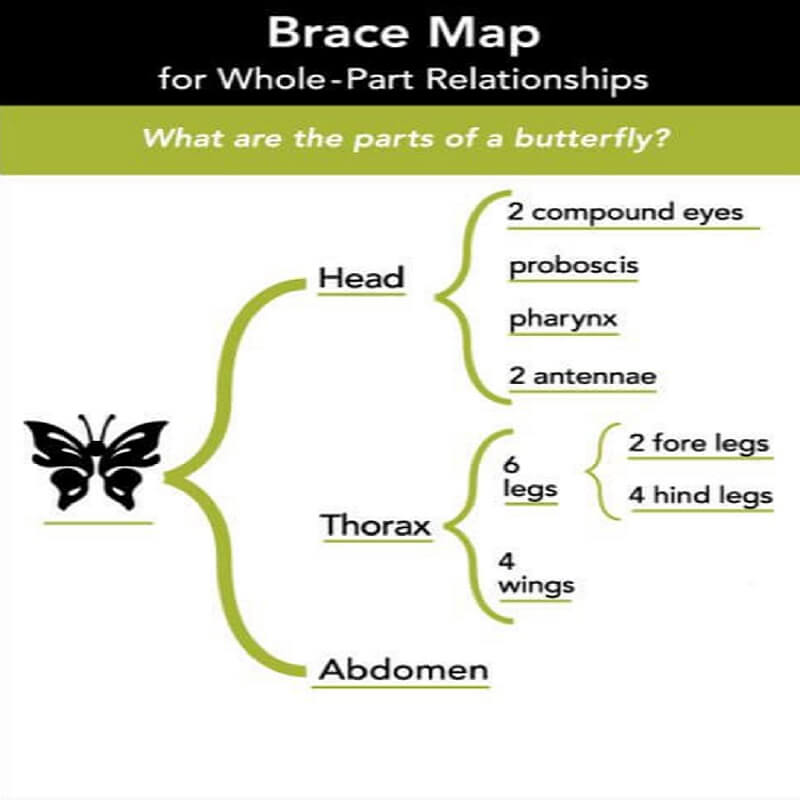
8. Circle Map
Lastly, we have the circle map. This kind of thinking map is obviously the easiest and simplest map among them all. Furthermore, the circle map is basically the map for a brainstorming session. Based on its name, the circle map is a thinking map that contains a circle shape at the middle where the main topic starts and a giant circle around the smaller one. Then, the free flow information can be placed anywhere in the middle of the two processes drawn.
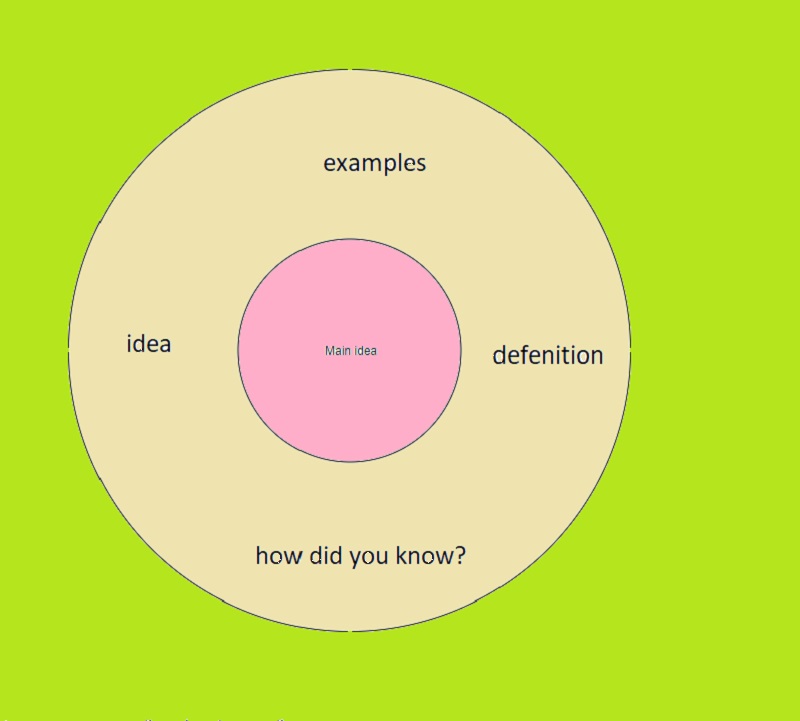
Part 3. The Easiest and Creative Way of Creating Thinking Maps
Upon seeing all the types of thinking maps, it's time for you to make one. For this reason, we bring MindOnMap, the most accessible, most creative, and reliable online tool that can help you create persuasive yet alluring maps. Furthermore, this delightful mind map maker possesses many beautiful presets, stencils, icons, and templates to significantly increase your interest in creating different thinking maps examples!
Secure Download
Secure Download
How to Create a Map With MindOnMap
Make Your Profile
Upon visiting its main page, you must log in using your email account to create a profile. Then, on the main interface, click New and choose among the templates you want to use. Here, we will try to make a bubble map.
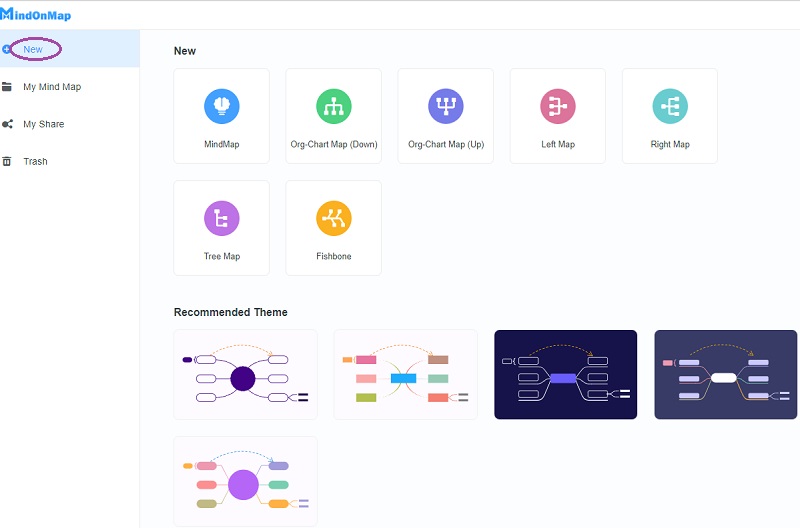
Expand the Nodes
Add nodes by clicking the node you want to expand on the canvas and hitting the TAB button from your keyboard. Anyway, the shortcuts are presented in the picture below to help you. Then, initiate labeling the nodes based on the information.
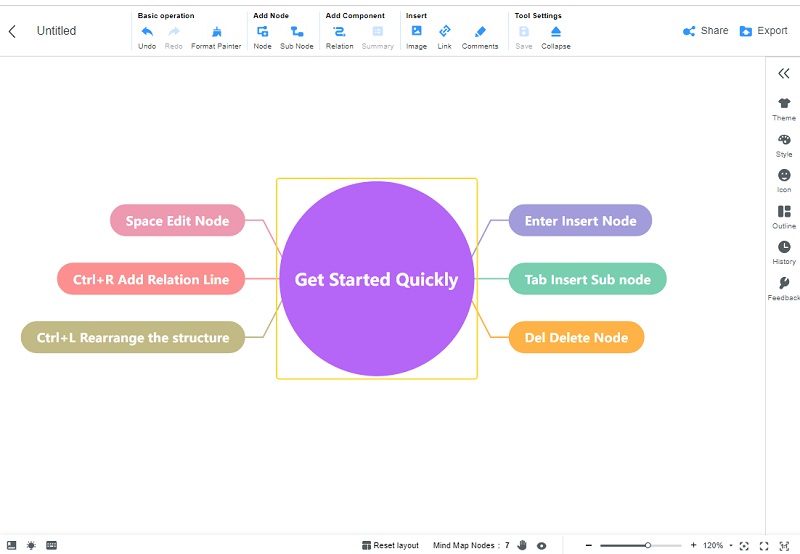
Adjust the Shapes and Colors
Since we are trying to make the bubble among the different thinking maps, let's make the nodes in bubbles or circles in shape. To do so, click on each node, then hit the Circle shape from the Style in the menu bar. The same goes for the adjustment of colors.
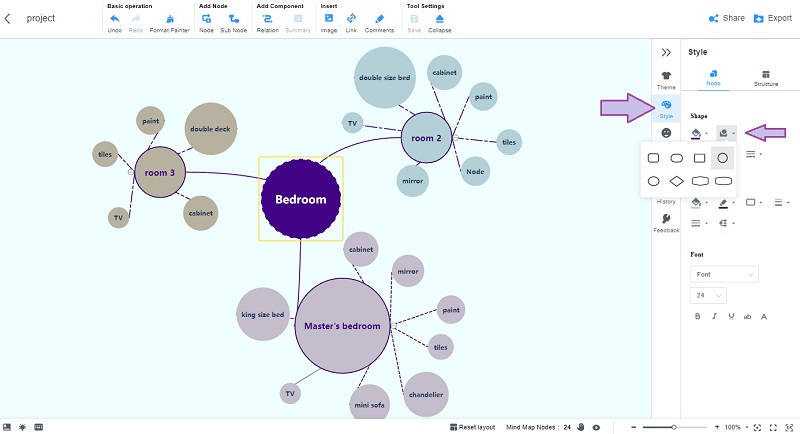
Save the Map
Click the Export tab if you want to save a copy of your map on your device. Hence, since you have already made your profile, your maps will be kept on your profile as your record.
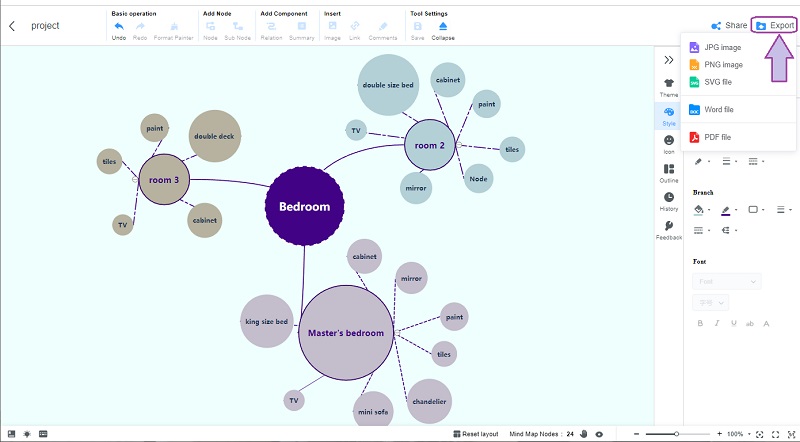
Further Reading
Part 4. FAQs About the Thinking Maps
What thinking map should I use for my project management?
Project management is often presented in a bubble map.
How to do a brace map in Word?
In creating a brace map using Word, you just have to insert the brace character found among the Shapes when you hit the Insert tab. Then start customizing the map from there.
Is the strategic diagram a thinking map?
The strategic diagram is also known as a strategic thinking map that presents the strategic plan of an organization or a group.
Conclusion
There you have it, the thinking maps that will improve your thinking approach. This article calls for you to have better and improved analytical thinking with the help of maps. Thus use the MindOnMap, and start being creative at the same time.







